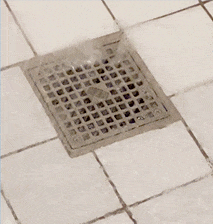DISSOLVABLE BAG INFORMATION & FAQ’S
WHAT IS IT?
![]() A biodegradable, non-toxic and compostable bag that dissolves in hot water in seconds before your eyes
A biodegradable, non-toxic and compostable bag that dissolves in hot water in seconds before your eyes
![]() A sustainable packaging solution that eliminates the use of plastic polybags
A sustainable packaging solution that eliminates the use of plastic polybags
MATERIAL BREAKDOWN
Made of a water soluble and biodegradable combination of Polyvinyl Alcohol (known as PVA), starch, glycerin and water. It does not contain PP, PE, PS, or PVC plastic. These non-toxic bags have been independently verified to show no trace of any harmful elements and no estrogenic activity is released into the environment.
COMPOSTABLE:
LANDFILL BIODEGRADABLE:
WATER SOLUBLE:
ENVIRONMENTALLY SAFE:
HOW TO DISSOLVE:
1. Either place the bag in a container and pour boiling water on top, or hold it out under a faucet running hot water. After a minute or so, it will have dissolved.
2. After the dissolution, you can pour the remaining liquid down the drain.
3. The wastewater will be treated at a sewage plant. After being consumed by microorganisms, it will completely break down to only carbon dioxide and water, with no formation of microplastics.
*Bags will also dissolve in cold or room temperature water, just at a slower rate.
*Before dissolving garment bags or mailer bags, please cut and dispose of the
adhesive tape strip.




